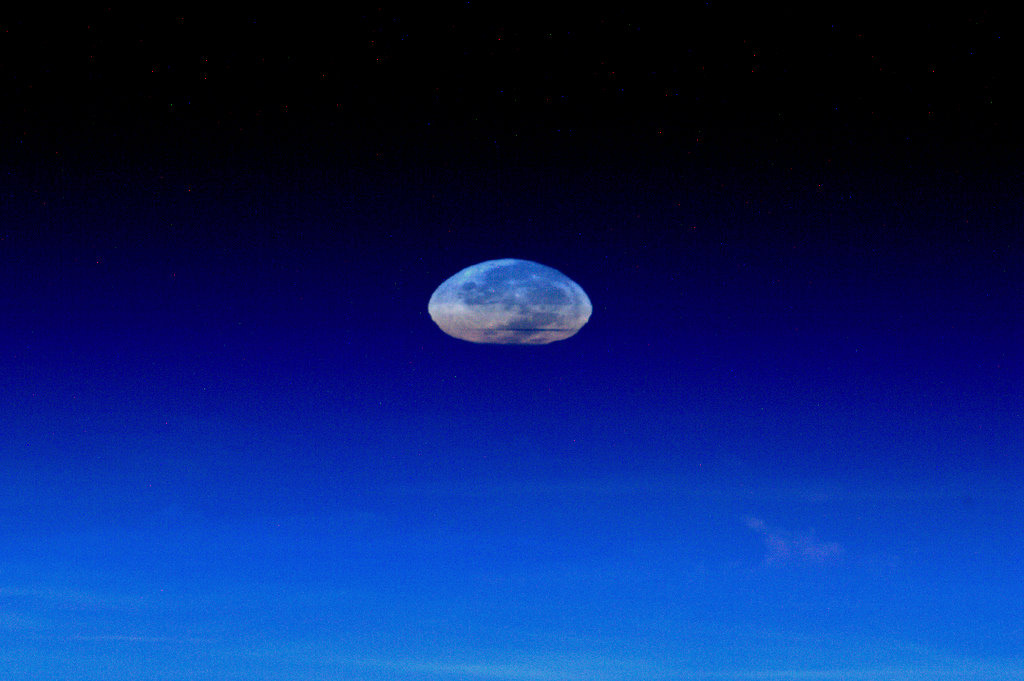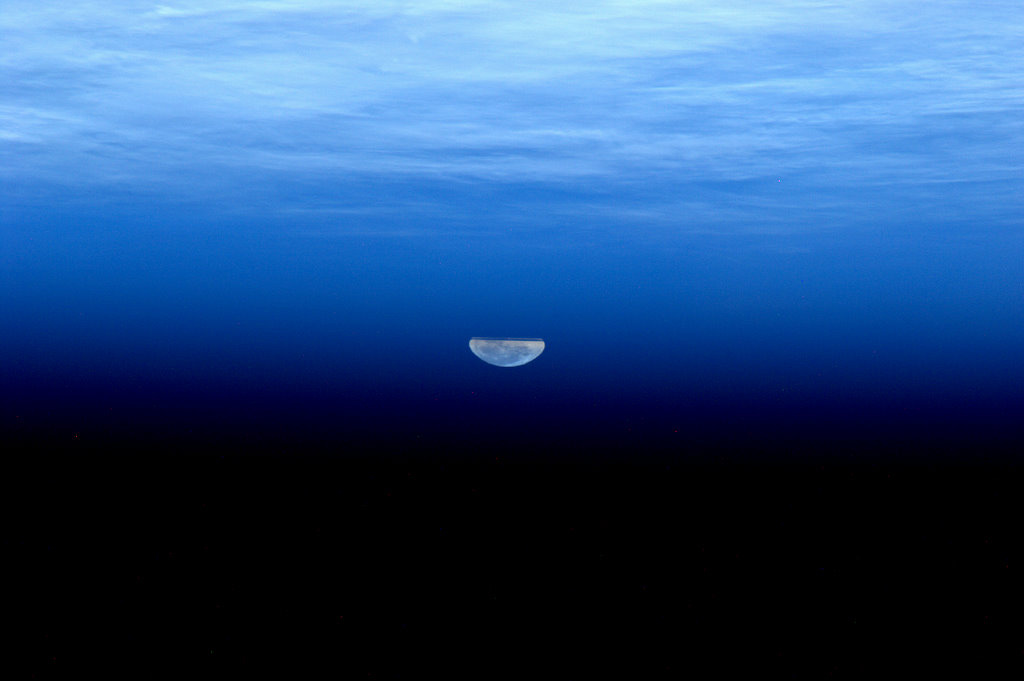Astronaut Sees Squashed 'Supermoon' From Space (Photos)

Skywatchers on Earth weren't the only ones dazzled by the so-called weekend "supermoon" on Saturday. An astronaut in space also snapped spectacular photos of the full moon of May, including views of a squashed moon sinking behind the Earth's horizon.
Dutch astronaut André Kuipers photographed the supermoon of 2012 from a window on the International Space Station, where he has been living since December. He took the photos on Saturday, May 5, when the moon was in its full phase while at its perigee — the closest point to Earth in its orbit. Astronomers call the phenomenon a "perigee moon," though it is also known informally as a "supermoon."
One of Kuipers' supermoon photos captures the stunning moment when the moon dips toward Earth's horizon and is distorted by the planet's upper atmosphere, giving it an odd, squashed look.
"Supermoon sinking into the atmosphere," Kuipers wrote in a Twitter post for the photo.

A later snapshot reveals the moon as little more than a squashed dome as it slips behind the Earth as viewed from the space station. "Flattened moonbeams," Kuipers wrote in a photo description. [More Supermoon Photos of 2012]
Other photos by Kuipers show May's bright full moon shining over a blue Earth or, in another view, framed against the stark blackness of space. The astronauts even captured a video of the supermoon from space.
"The blue colors of our atmosphere are a beautiful contrast with the supermoon," Kuipers wrote.
Get the Space.com Newsletter
Breaking space news, the latest updates on rocket launches, skywatching events and more!
At the time, the moon was about 221,802 miles (356,955 kilometers) from Earth, with astronomers predicting it could appear up to 14 percent bigger and 30 percent brighter than average to observers on Earth. On average, the Earth is about 230,000 miles (384,400 km) from the moon.
Saturday's supermoon occurred when the moon hit its perigee point for May — which is the closest lunar perigee of 2012 — at 11:34 p.m. EDT (0334 Sunday GMT), and then hit the peak of its full phase one minute later.
The last supermoon occurred on March 19, 2011. On that night, the moon was even closer to Earth by about 248 miles (400 km).
Kuipers is one of three astronauts currently living on the International Space Station, and has been a prolific space shutterbug during his mission. NASA astronaut Don Pettit — who is also snapping stunning photos of Earth from space — and Russian cosmonaut Oleg Kononenko round out the crew. Kononenko is commanding the trio's Expedition 31 mission.
You can follow SPACE.com Managing Editor Tariq Malik on Twitter @tariqjmalik. Follow SPACE.com for the latest in space science and exploration news on Twitter @Spacedotcom and on Facebook.
Join our Space Forums to keep talking space on the latest missions, night sky and more! And if you have a news tip, correction or comment, let us know at: community@space.com.

Tariq is the Editor-in-Chief of Space.com and joined the team in 2001, first as an intern and staff writer, and later as an editor. He covers human spaceflight, exploration and space science, as well as skywatching and entertainment. He became Space.com's Managing Editor in 2009 and Editor-in-Chief in 2019. Before joining Space.com, Tariq was a staff reporter for The Los Angeles Times covering education and city beats in La Habra, Fullerton and Huntington Beach. In October 2022, Tariq received the Harry Kolcum Award for excellence in space reporting from the National Space Club Florida Committee. He is also an Eagle Scout (yes, he has the Space Exploration merit badge) and went to Space Camp four times as a kid and a fifth time as an adult. He has journalism degrees from the University of Southern California and New York University. You can find Tariq at Space.com and as the co-host to the This Week In Space podcast with space historian Rod Pyle on the TWiT network. To see his latest project, you can follow Tariq on Twitter @tariqjmalik.









